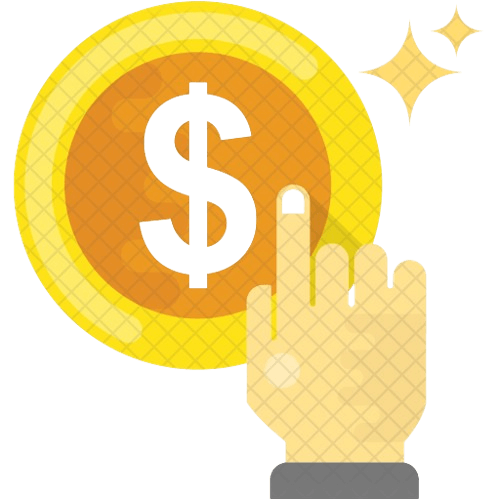How to Engage Your Audience Successfully
Social media graphic design has recently surfaced as one significant necessity for brands seeking to cut through the noise feeds in the dizzying world of digital marketing. It is often contended that social media sites boast billions of users worldwide. Well, it is very apparent that such an opportunity to connect with, inform, and entertain the audience comes only with a social media platform. This article focuses on the essentials of social media graphic design, its importance, best practices, and how it can help elevate your brand’s online presence.
Understanding Social Media Graphic Design
Graphic design in social media is developing visual content for particular social media. Pictures, videos, infographics, and animations that actually succeed in grabbing focus will convey a message that may be interpreted through one’s brand. As people scroll through their feeds, it is clearly apparent that there is a call for striking visuals; how one stops the scroll is through the use of effective graphic designs.
Role of Visuals in Social Media
In social media graphic design, images have a lot to do with the kind of post that will attract attention. According to research, posts containing images are constantly getting more engagement than those that don’t have pictures. As the attention spans are diminishing day by day, having the ability to communicate a message quickly through visuals is almost invaluable. Whether it is an image that resonates or a statement graphic, users react differently to a video and branding, all according to what they are seeing.
Meaning of Graphic Design on Social Media
1. Branding Identity
Social media graphic design is crucial for creating a branding identity and constantly reinforcing it. Continuous use of the color scheme, font, and imagery by designs unifies the overall appearance through developing increased recognition and recall in users and leads to trust in the brand and its loyalty. All of these are elementary elements of marketing success in the long term.
2. Engagement
Social media is the new money of engagement. Images with a possibility of value to post likely get more shares, likes, and comments on the posts. Graphic designing for social media can take an announcement and turn it into an image that looks more appealing and induces a user into creating an action.
Brands can even make that more engaging by making it dynamic, like animations or interactive polls.
3. Clear Communication of Messages
Among its other objectives, social media graphic design is fast information dissemination. For instance, through infographics, complex information can be broken down into visuals that are easy to digest; key points can be easily understood by the audience. This is very crucial because most users will skim over the content instead of reading it fully.
4. Traffic and Conversions
The social media graphic design should also be effective in capturing one’s attention in a way that will drive traffic to the brand’s website or landing page. That is, eye-catching visuals along with clear calls to action can direct users to purchase, sign up for a newsletter, or engage with other content. Convergent capability is what makes graphic design an essential part of any social media strategy.
Best Practices of Social Media Graphic Design :
There are best practices followed in social media graphic design that would connect to your audience and associate with the values of your brand.
1. Know Your Audience
The basis of effective social media graphic design starts with knowing your target audience. Different demographics respond to different styles, colors, and messages. A little research into an audience can help you target the right graphics that would satisfy their preferences and make your content resonate and encourage interaction.
2. Quality Over Quantity
As tempting as it might seem to churn out volume after volume of media, the answer is, and will be, always show quality in social media graphic design. Good high resolution graphics and well-designed ones impress with professionalism and seriousness. That’s bad because a low-quality graphic might actually do actual damage to a brand’s reputation and frighten away potential clients. Treating better tools and resources can differ very much.
3. Work with Brand Color and Fonts
The graphic design of social media is highly consistent. Utilizing the existing color and typography of your brand allows for a unifying visual identity across different platforms. Not only does this provide them with much-needed brand recognition, but it also helps create a familiar feeling of trustworthiness in your audience.
4. Customize for Every Platform
Since each social media site has different requirements when it comes to image size and format, effective social media graphic design relies on how you adjust your content to each platform’s needs. As an example, Instagram likes a square image while Facebook accepts different formats. Identify the ideal dimensions for every platform so that your images will really come out best.
5. Use Minimal and Meaningful Text
Sometimes less is more in graphic design and social media. Too much text in images drowns a viewer’s way and becomes a detriment to your message. Bold, concise text is used to add enhancement to your images to preserve your underlying message so everyone sees it.
6. Try Format End
The other critical aspect of keeping audiences engaging is diversity in the content. Social media graphic design is not meant to be static images only. Mix up the formats such as GIFs, videos, and carousels. Each has its special opportunity for storytelling and interactions.
7. User-Generated Content
User-generated content is the best source for social media graphic design. Not only does it help in the creation of community, but authenticity also gets a boost because of it. The more people create content for you, the bigger your chances are for that one thing that may act as social proof: real-world evidence that your brand really works and keeps others wanting to get involved.
Tools for Social Media Graphic Design :
Though having the right tools may make all the difference in your social media graphic design efforts, here are some that people find very useful:
1. Canva
Canva is a pretty user-friendly design tool for all types of templates of social media. A user just needs to drag and drop images, fonts, and other design elements into his graphic, not even a real pro requires almost any extra time to create professional-looking graphics. Canva offers vast libraries of images, fonts, and design elements, so this brand makes one of the best options for brands that want to reduce their design process.
2. Adobe Creative Suite
Advanced design requirements can also be done using other applications of Adobe Creative Suite, for example, Photoshop, Illustrator, etc. It’s evidently a professional-grade tool with a higher learning curve to do social media graphics, but the creative capabilities are unmatched.
3. Piktochart
Piktochart is amazing for infographic and visualization presentations. If your strategy will be based on educational content, this tool is what you need to illustrate complex information in an interesting way, enriching your social media graphic design in general.
4. Visme
Visme is not entirely uniform in its approach; it is really a tool for infographics, presentations, and even social media graphics. All things are assembled in a drag-and-drop interface with very flexible templates-it makes designing much easier, yet still allows creativity to flow.
Future of Social Media Graphic Design
With such continuous evolution in social media, strategies over social media graphic design will also evolve. As newer technologies such as augmented reality (AR) and virtual reality (VR) come into being, new ways of interacting with one’s target audience are sure to surface. Integration of these technologies into graphics in social media is anticipated to create immersive experiences unknown before that will captivate users at a different level.
Authenticity Focus
Authenticity is the new buzzword of the influencer marketing and sponsored content era. What social media graphic design will look like in the future is about making real and relevant content that stirs the user’s emotions. This requires a lot of connection with audiences on a deeper level, thus necessitating brands being connected with their audiences on a deeper level.
Sustainability and Social Responsibility
With the growing awareness among consumers about social and environmental issues, brands will have to be a reflection on these values in their social media graphic design, which may include messages of sustainability, inclusivity, or social responsibility in visual content.





